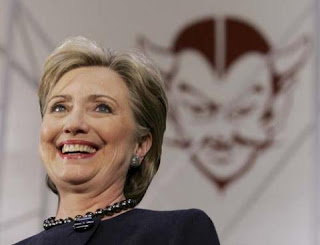Like Obama’s economic plan, Hillary’s delusional economic plan would continue to destroy jobs in America and cause economic disaster. Hillary touts Bill Clinton’s economics, but she fails to show that as Mr. Clinton left office, America went through the IT bubble and set up the next bubble, which we know as the housing bubble. The housing bubble caused the economic crash, which the American economy has been struggling to pull out of, but may be very difficult to do after what Obama has done to the workforce, which has set up America for another economic crash.
In basic economics:
It is known that as taxes go up the cost of products go up; wages continue to rise, and cost of living goes up, this is a no-brainer. If a business has to pay more in taxes and more in wages, they have to raise the cost of their product, which become too costly to export. More imports are allowed into the country to provide lower cost products within the country and drive the cost of living down, but what this does is sends money overseas and continues to push the National debt higher. Also, the companies within the country are unable to compete with the cheap imports so they layoff workers.
With a higher National debt, the government needs to raise the taxes to pay down the National debt.
In effect, the cycle continues:
- Business taxes go higher
- Individual taxes go higher
- Cost of living goes higher
- Wages go higher
- Cost of products go higher
Local businesses can’t compete with imports, so companies are forced to send manufacturing overseas and their products become too costly to produce in the US, so companies send more jobs overseas and layoff more local workers or close their doors, so the vicious cycle continues.
Tax cuts increase household demand by increasing workers’ take-home pay. Tax cuts can boost business demand by increasing their after-tax cash flow, making it easier to hire and invest.
The economic activity reflects a balance between what people, businesses, and governments want to buy and what they want to sell. In the short run—focusing on the next one or two years—economic policy has a greater impact on the demand side. When the economy is weak, for example, the Federal Reserve tries to boost consumer and business demand by cutting interest rates or purchasing financial securities. Congress, for its part, can increase demand by increasing spending and cutting taxes.
'Keynesian Economics'
An economic theory of total spending in the economy and its effects on output and inflation. Keynesian economics was developed by the British economist John Maynard Keynes during the 1930s in an attempt to understand the Great Depression. Keynes advocated increased government expenditures and lower taxes to stimulate demand and pull the global economy out of the Depression.
Subsequently, the term “Keynesian economics” was used to refer to the concept that optimal economic performance could be achieved – and economic slumps prevented – by influencing aggregate demand through activist stabilization and economic intervention policies by the government. Keynesian economics is considered to be a “demand-side” theory that focuses on changes in the economy over the short run.
http://www.investopedia.com/terms/k/keynesianeconomics.asp



No comments:
Post a Comment